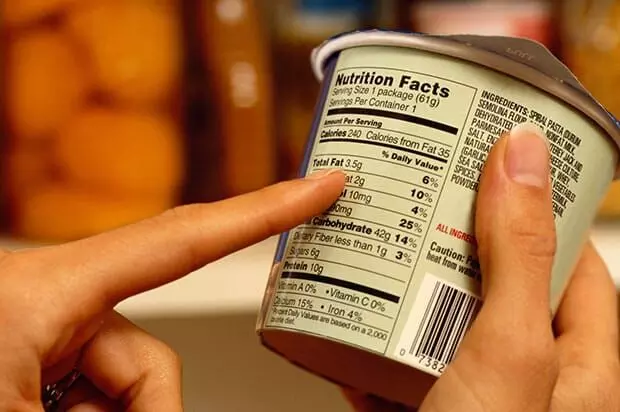Front pack choices will discourage unhealthy eating habits: Study
The study was on the acceptability and potential use of different formats of front-of-pack nutrition labels (FOPNL) in promoting informed food choices.
By Newsmeter Network
Hyderabad: A study conducted by the ICMR-National Institute of Nutrition found that warning labels on packs can deter choice and consumption of even moderately unhealthy foods while summary ratings like health star or NutriScore can help identify healthier variant among the available foods. The study was on the acceptability and potential use of different formats of front-of-pack nutrition labels (FOPNL) in promoting informed food choices.
What are summary labels and warning labels?
Summary labels provide a brief and concise overview of the product’s key features and benefits, often including information about positive as well as negative nutrients. Warning labels, on the other hand, provide information about potential hazards associated with the product as they take into consideration nutrients of concern like sugars, fats, and salt.
What did the study find?
FOPNLs are usually seen as important tools of public health communication about the healthiness of the product. Different formats of FOPNL are in use in different countries globally either voluntarily or by mandatory implementation. In India, the Food Safety Standards Authority of India (FSSAI) is considering the implementation of a symbol-based FOPNL. However, context-specific evidence on the effectiveness of FOPNL is needed to inform ongoing advocacy and regulatory processes in India.
The decision on which type of FOPNL should be used in a country should be based on local research, along with regional and global evidence, and in consideration of each country’s specific objectives for developing a FOPNL policy. Given this background, the current study tested the consumer acceptability, reliability, and understandability as well as the cognitive workload, informativeness, and purchase intention of five FOPNL formats—Nutri-score (NS), Health Star Rating (HSR), Warning Labels (WL), Multiple Traffic Lights (MTL), and Nutri-star Rating (NSR).
NS and HSR are FOPNL formats currently in vogue in Europe and Australia, respectively, and the FOPNL rating (colour coding from green for healthy to orange for moderately healthy and red for unhealthy in case of NS and number of stars in case of HSR) are based on both positive and negative nutrients.
This was a cross-sectional study with a quasi-experimental design conducted among 3,231 (adults 2,616, adolescent 615) participants who share the responsibility of food shopping in their homes from five regions of India—North (Delhi); East (Kolkata), West (Pune), South (Hyderabad), and Northeast (Jorhat, Assam).
It was observed that even though the percentage of participants reading nutrition information is low, the participants checking the veg/non-veg symbols and quality symbols was higher. Therefore, FOPNL on pre-packaged processed foods is likely to have good uptake among the Indian population as they are symbol-based.
“The uniqueness of the study is also that the FOPNL formats were used on different variants of the mock packs of the same food. Unlike in other studies, different foods were not used to depict different labels. Therefore, the responses could be solely based on the understanding of the FOPNL alone without a preconceived perception about the healthiness of the product,” said Dr. Hemalatha R., director of NIN.
The study showed that warning labels (WL and NSR) deterred more people from choosing moderately healthy or unhealthy variants, whereas the summary labels made them look healthier.
“Participants randomised to any of the FOPNL formats were able to identify the healthiest and least healthy variants of foods. However, warning labels had a greater impact in altering the health perception of the food products, as the presence of even one warning sign prompted more cautious behaviours in choosing the foods. However, among the summary indicators, even the presence of 2 stars Health Star Rating or Code D (orange shades) in NutriScore prompted higher choice of the same variants of food and lesser willingness to opt for others,” said Dr. SubbaRao M. Gavaravarapu, Scientist F and the lead investigator of the study.
“The choice of the FOPNL format for the Indian scenario should not be based only on wider acceptability and appeal but on its ability to influence food choice. The key purpose of introducing the FOPNL also drives the choice of the format. If the purpose of FOPNL is to promote healthy food choices, then summary labels may be useful. Alternatively, in the context of growing overweight, obesity, and non-communicable diseases, if the FOPNL has to serve as a preventive tool and deter the consumers from consumption of nutrients of concern, then warning indicator labels (like WL in NSR in the current study) could be helpful,” said Dr. Hemalatha.
It is worthwhile to note that the current format Indian Nutrition Rating (INR) being considered by the Food Safety, Standards Authority of India (FSSAI) is a summary label like the health star rating. The positive scores are partially based on ingredients like fruit and vegetable, legumes, millets etc. High fat, sugar, and salt (HFSS) foods are categorised based on nutrients of concern present in the food. It might be difficult to enforce the regulation as the validation of star rating at the field level at the time of implementation may be difficult as analytically, it is not possible to quantitate the ingredients (to crosscheck or verify), while it is easier to assess the nutrients in the food product. Therefore, the study recommends that it would be appropriate to opt for a format that makes validation/verification easier.